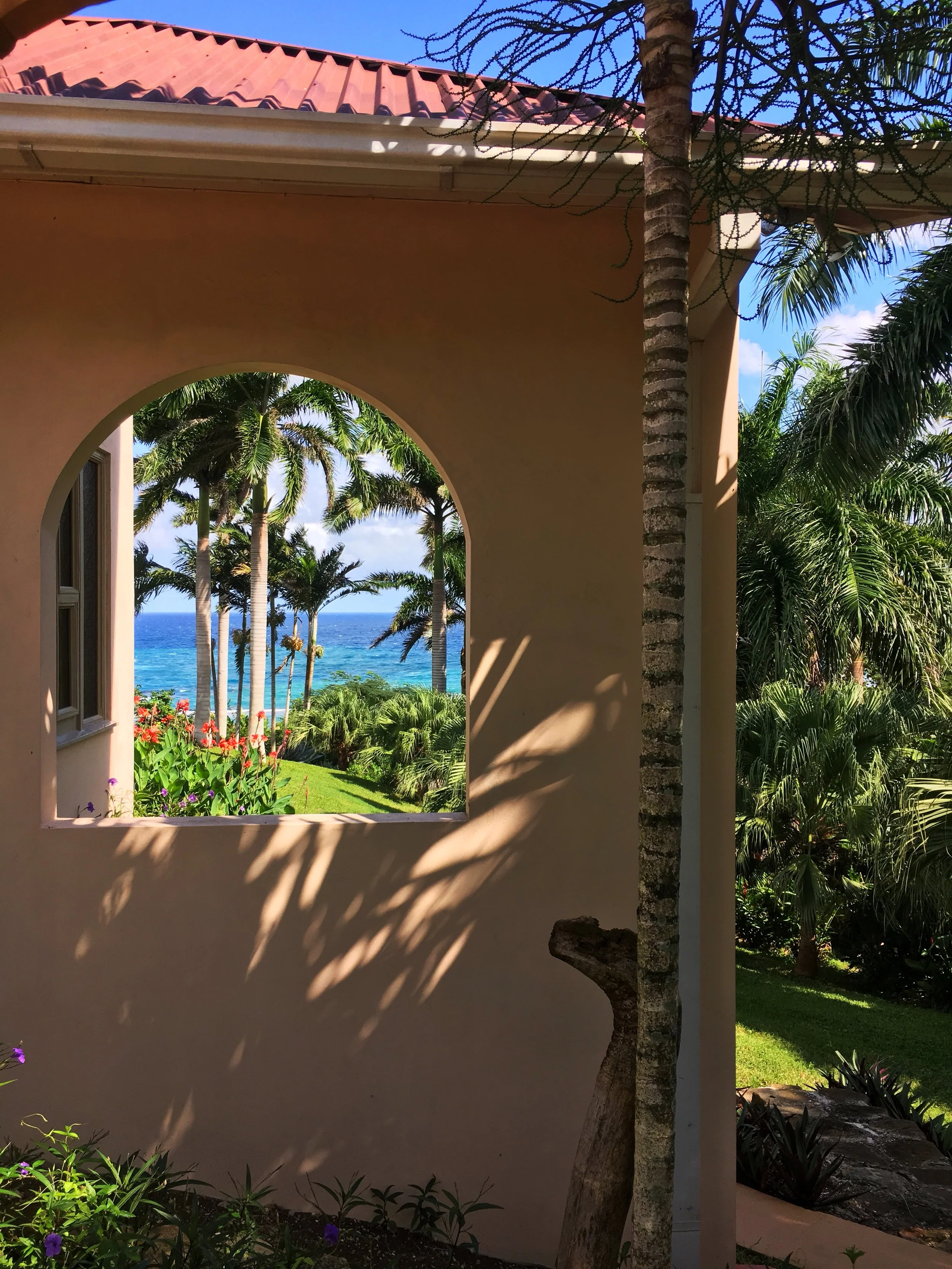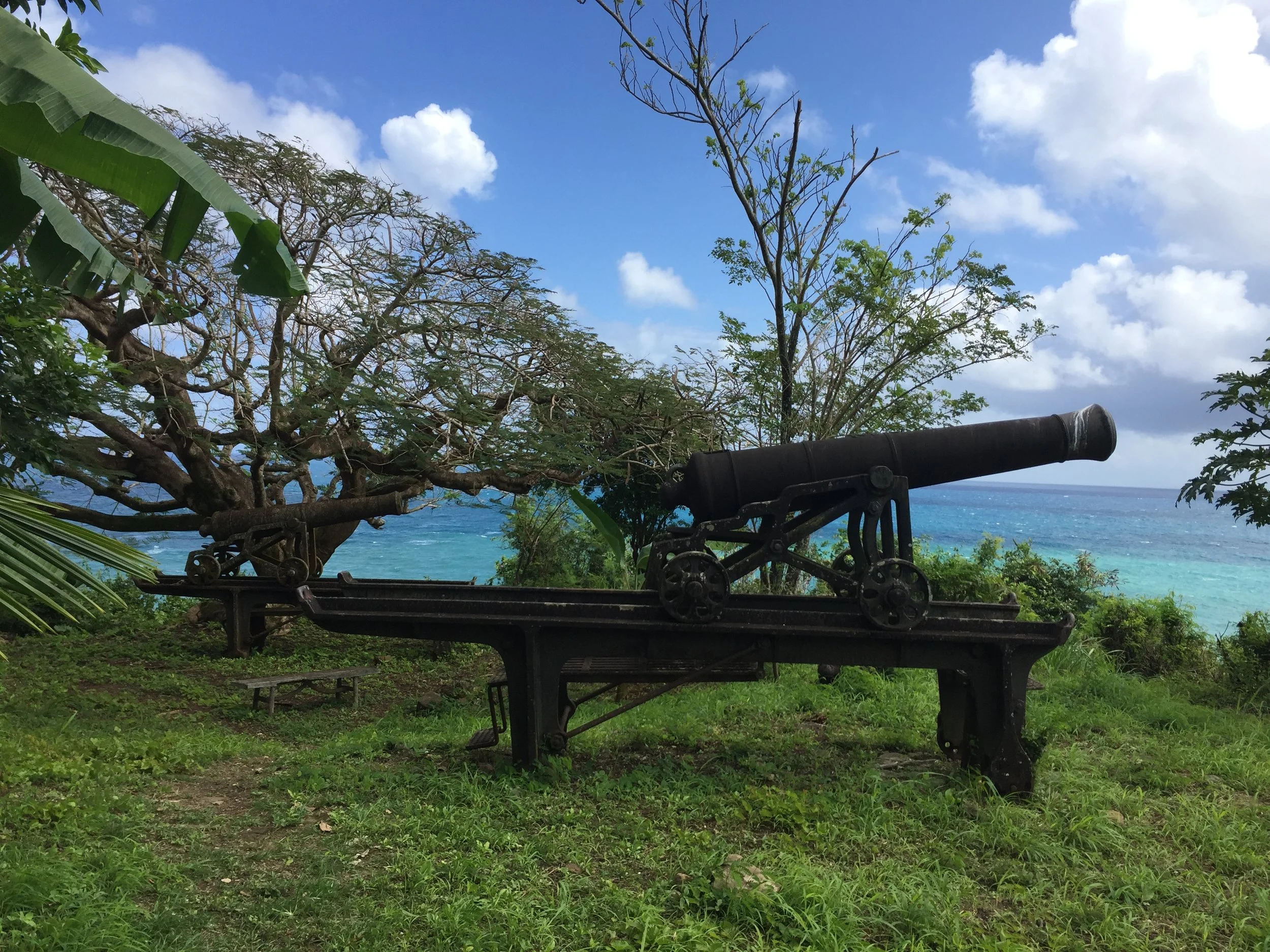Historical Jamaica
Saint Mary Parish Church
"In Port Maria stands the Saint Mary Parish Church which was completed on June 5th 1861. It was built by slaves from brick and mortar on the Glebe lands next to the Muster or Parade Ground which is presently the Claude Stuart Park. The new building took the place of an older one which was destroyed by hurricane. The older building stood between the old rectory and Fort Haldane on Haldane Hill."
Retrieved from: http://www.jamaicatravelandculture.com/destinations/st_mary/port_maria/st_mary_parish_church.htm
Fort Haldane
"Fort Haldane served a pivotal role in Tacky's rebellion, one of Jamaica's bloodiest rebellions against slavery in 1760. On Easter Sunday, a runaway slave known as Tacky and a small group of slaves from neighboring plantations murdered their masters and marched to Port Maria where they killed the guards at Fort Haldane and stole several barrels of gunpowder and firearms. They fought alongside hundreds of other slaves and Maroons for five months. Their rebellion was ultimately quashed by the more powerful British and the death of Tacky in a fierce gun battle.
The fort was in active service from 1759 until 1780 when a hurricane destroyed the storerooms, barracks, and main garrison building. By 1780, the threat of Spanish attack on the North Coast of the island had largely waned, and the decision was made to abandon the fort and relocate the garrison to nearby Ocho Rios.
Governor Haldane was actively involved in the design of the fort. As a highly decorated veteran of many major field battles, Haldane was an expert in artillery and ballistics. Haldane was friends with noted English scientist Benjamin Robins, and he enlisted Robins to help with the gunnery placements for the fort. Robin’s applied his scientific approach to ballistics, and determined that the entire port could be successfully defended by the use of two high-accuracy cannons placed 1,000 ft above sea level.
The guns that would be required would have a precision that was unprecedented at the time. The cannon carriages were mounted on turntables to permit side-to-side aiming, and a track to allow for cannon recoil. The turntable was a small version of the locomotive turntables that were used by railroad companies to reverse engines or move them from one track to another. The ability to move the cannons almost 180 degrees across the horizon eliminated the need for a multi-cannon arsenal, while providing the highest degree of protection from enemy attack.
The two cannons and the ruins of several outbuildings are all that remains of Fort Haldane today."
Retrieved from: https://en.wikipedia.org/wiki/Fort_Haldane
Port Antonio
"Portland formally became a parish in 1723 by order of the Duke of Portland, after whom it is named, and then Governor of Jamaica. The existing port was to be called Port Antonio and was slated to become a naval stronghold. To that end, by 1729, the British began to build Fort George on the peninsula separating the twin East and West harbors known as the Titchfield promontory. The fort was intended to protect settlers from attacks by the Spanish from the sea, and from the Maroons (run-away slaves) who lived in the mountains.
Port Antonio was a sleepy coastal town until the 1880s, when Lorenzo Dow Baker started the banana trade in Jamaica and successfully promoted Port Antonio as a destination for wealthy American travelers. "Portie" became a boom town. The banana trade and the tourists who came in the banana boats, was once so large that at one time, weekly sailing from Port Antonio was greater than weekly sailing from the great English port of Liverpool.
The island was glamorized by Hollywood as a model of paradise in movies of the 1940s and 1950s, and in later movies such as Club Paradise and Cocktail. This image was added to by the arrival of movie star Errol Flynn in 1946 when his yacht, the Zaca washed ashore in bad weather. He subsequently bought nearby Navy Island, part of historic Fort George in Port Antonio as well as hundreds of acres of farmland along the Portland coast."
Retrieved from: https://en.wikipedia.org/wiki/Port_Antonio




